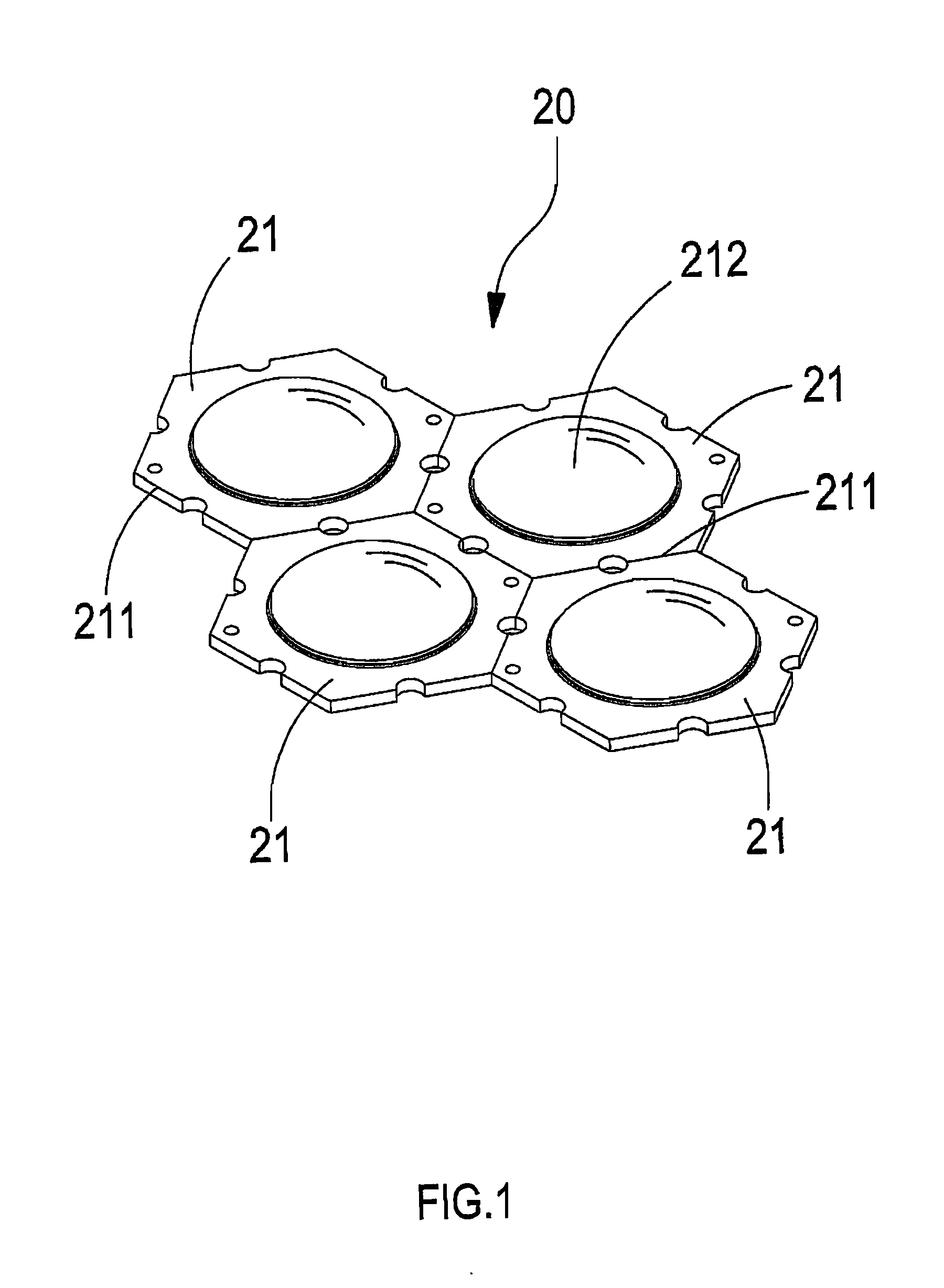Composite structure for polygonal light-emitting diode
a polygonal, light-emitting diode technology, applied in the direction of point-like light sources, lighting and heating apparatus, lighting support devices, etc., can solve the problems of inability to expand led modules, inability to carry out connective expansion of most of such led modules, and low efficiency of the first light-emitting diode. achieve high expansionability, save time and cost, and high variability
- Summary
- Abstract
- Description
- Claims
- Application Information
AI Technical Summary
Benefits of technology
Problems solved by technology
Method used
Image
Examples
Embodiment Construction
[0018]Referring to FIG. 1 and FIG. 2, which show an elevational view of a LED (light-emitting diode) module assembly of the present invention and a block diagram of a preferred embodiment of the present invention respectively, and it can be clearly seen from the drawings that the present invention comprises a transformer 10 controlling a LED module assembly 20. The present invention is characterized in that the LED module assembly 20 is a composite structure from a plurality of polygonal LED modules 21, in which each of the LED modules 21 comprises at least one LED light-emitting element 212. The lengths of sides 211 of the LED modules 21 enable corresponding combination thereof, thereby enabling the LED modules 21 to be mutually connected together from any one of the sides 211. And a multitude of different forms can be configured by connective expansion of the sides 211 of the LED modules 21, thereby increasing the area light source.
[0019]According to the aforementioned structure a...
PUM
 Login to View More
Login to View More Abstract
Description
Claims
Application Information
 Login to View More
Login to View More - R&D
- Intellectual Property
- Life Sciences
- Materials
- Tech Scout
- Unparalleled Data Quality
- Higher Quality Content
- 60% Fewer Hallucinations
Browse by: Latest US Patents, China's latest patents, Technical Efficacy Thesaurus, Application Domain, Technology Topic, Popular Technical Reports.
© 2025 PatSnap. All rights reserved.Legal|Privacy policy|Modern Slavery Act Transparency Statement|Sitemap|About US| Contact US: help@patsnap.com



